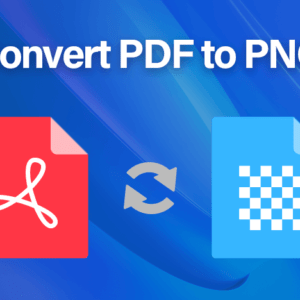Do you want to create a website that will look great on various devices and screen sizes? Have you considered using responsive web design to build your site? Do you have any idea what responsive web design is? In today’s fast-paced, technologically driven world, creating a website entails more than simply slapping your logo on a web page and hoping your audience is impressed by your excellent use of white space. With so much web browsing being done on mobile devices, a site must be able to respond well to each device.
I know it sounds intense! Let us go over the fundamentals of responsive web design one by one.
What is Responsive Web Design?
Simply put, responsive web design is the process of developing a website that works on any device, regardless of screen size. This ensures that your audience has a positive experience when visiting your site, irrespective of their device.
This no longer works currently on smartphones and tablets because every screen size is so different. Enter responsive Nashville website designer: a great way to tailor your site to fit any smartphone, tablet, or desktop screen.
Why is Responsive Important?
If your audience cannot quickly view or navigate your site from any device, they will lose interest. We live in an age of convenience and comfort. The best viewing experience for your audience is a top priority for any website. Responsive Nashville website design makes it easy for visitors to read and navigate your site.
There are advantages to having a responsive website built for you. Instead of creating separate websites for desktops, tablets, mobiles, and so on, you can have a single URL that applies to all devices, regardless of screen size, platform, or orientation.
However, this is not the only advantage of your site’s responsive design. It is one of Google’s lovely design solutions for modern websites. It means that responsive sites will be ranked higher than those that lack this great functionality. While counting the benefits of responsive web design, remember that it is more than just creating a website that works well on different devices. It is also about creating a website that is adaptable and flexible enough to display the true nature of a website without distortions.
Softcircles is a top Nashville website design company that collaborates with clients to create category-defining websites. It provides its global clients with cutting-edge web design that meets current technical and business demands in various domains. After years of experience, Soft Circles is proud to have established its company as a market leader in the IT industry. Their highly qualified and experienced developers and designers work tirelessly to meet and exceed their customers’ expectations.
How Does Responsive Web Design Work?
Responsive web design entails creating a site with flexible layouts, grids, images, and media queries. As a result, your site will be able to scale to fit the size of the device your viewer is using.
There are three types of responsive web design:
- Grid or Flexible Layouts
Flexible layouts are created using percentages or units. Your site can respond to different screen sizes by using ratios. For instance: If you use a portion, say 50%, the width will always be half, or 50%, of the screen, regardless of screen size.
- Inquiries from the Media
Your site’s screen size determines how it will appear on any given device. Media queries enable your site to respond to where various modules (header, sidebars, etc.) are placed on your area based on the device or screen size from which it is viewed.
For example, if your site is being viewed on a desktop, your modules may be configured with your header at the top and two or three sidebars directly underneath, side by side. When a visitor views your site on a mobile device, the modules respond by changing the order in which they are displayed. Your header will remain at the top, with your main content and sidebar modules stacked on top of each other to create a long scrolling site.
Using media queries, you can create an optimized site for any device. Many phones nowadays can display content in both landscape and portrait modes. Media queries allow your site to adapt to your audience’s viewing mode (landscape or portrait).
- Adaptable Images
Most developers struggle with creating a site where images scale correctly without losing resolution. Using the max-width property with a value of 100 percent is a quick (and usually the best) way to make your images scale to different screen sizes correctly. A max-width of 100% ensures that your media will scale to different screen sizes.
You can also create a flexible image in the following ways:
- Image concealment and disclosure
- Creating images that slide
- Photos in the foreground that scale with the layout
How to Test a Responsive Website
The responsive design test involves putting the website or URL through its paces on various devices. Testing the responsive website is practically impossible because we must set up different systems for different screen sizes. Resizing the browser window size to match the test scenario is one option for the responsive test.
Some browsers, such as Internet Explorer and Safari, will provide plug-ins or browser extensions, allowing you to view the viewport area in pixels. This simplifies testing by allowing you to achieve the desired screen size by modifying the pixels.
Other browsers, such as Chrome, provide software or a program called an “Emulator,” which can be used to change the screen features and environment as the desired device for testing.
Note: An “emulator” is software or a program provided within the browser that causes the host system (current browser) to behave similarly to the guest system (browser of the desired device that is to be tested for the screen size selected).
Although emulators cannot provide the exact environment required for testing, they are a cost-effective way to test an RW at a high level.
Conclusion
Using a responsive Nashville website designer to build your site will save you and your visitors a lot of time. A responsive web design will give your audience an optimal viewing experience while saving countless hours creating multiple sites for different devices and screen sizes.





